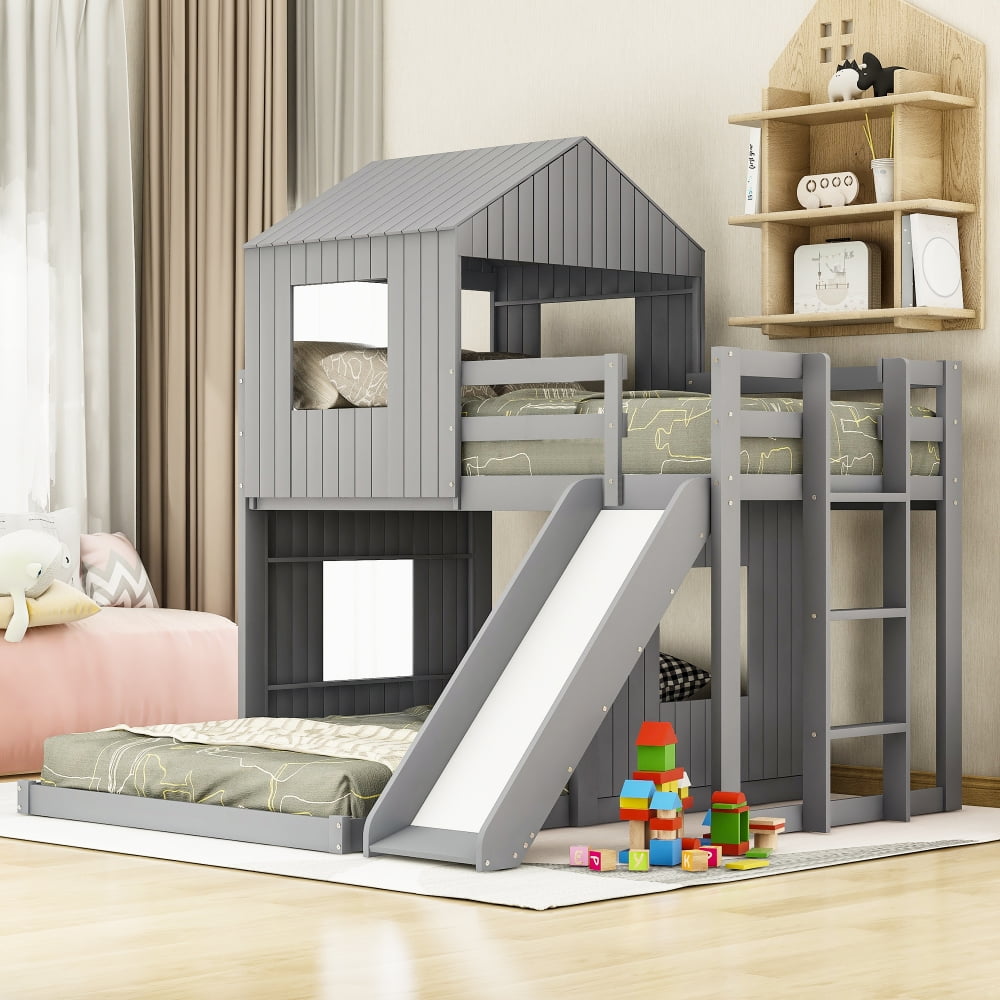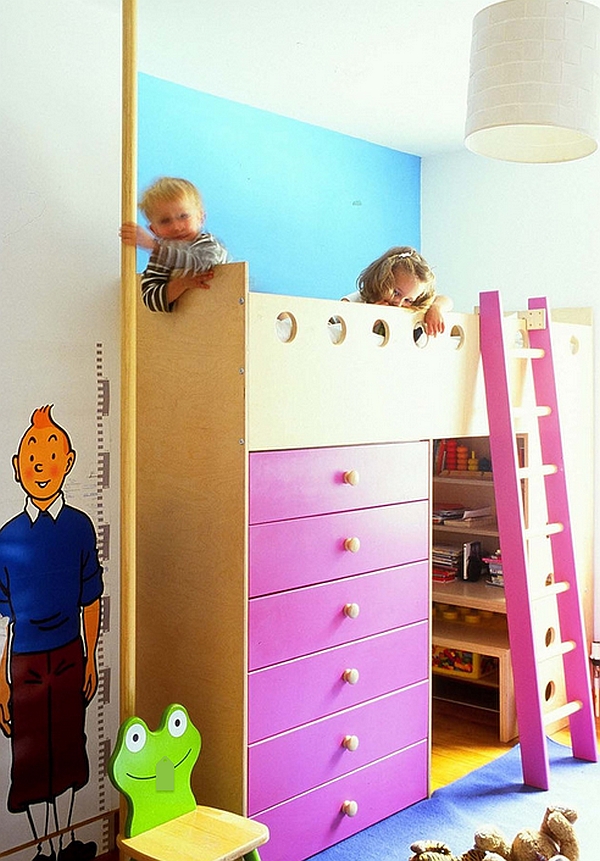The knowledge of the weight capacity of bunk beds and lofts for kids is essential for ensuring their safety, stability and longevity. Here are 10 important points to take into consideration regarding the capacity to carry weight on these beds:
1. Manufacturer Specifications:
Check the manufacturer's specifications to determine the maximum weight of your loft or bunk bed. Every model is fitted with the weight limit that is recommended by the manufacturer. This is vital for ensuring safety. The strictness of this limit is crucial to avoid structural failure and accidents. Even if the weight appears reasonable, you should not overtake this limit.
2. Understanding the concept of weight:
The capacity for weight isn't only the weight capacity in its entirety but also its distribution. Consider whether or not the bed is intended to be used for multiple children. Children can share the top bunk and the amount of weight they can carry together will easily over the limits recommended, increasing the risks of injuries. Make sure the bed is able to comfortably handle the combined weight of the entire group.
3. Choose the Right Bed Frame Material
Material of the frame has an impact on its weight capacity. Frames made from solid wood or constructed of heavy-duty steel have higher weight limits as compared to lightweight materials and particle boards. You should consider the durability and the material of a bed when assessing its capacity to bear weight.
4. Mattress Weight:
Remember to take into account the thickness and weight of your mattress when you are calculating the maximum amount of weight your mattress will be able to support. The weights of various mattresses differ in relation to the materials they are made of and their thickening. For example, memory foam mattresses are typically heavier than traditional innerspring mattresses. Be sure to include the mattress's weight in calculating the total weight of the bed.
5. The age and size of the children
Be aware of the weight and age of the children who will be sleeping on the beds. Children's weight increases with. This can affect the mattress's weight. Pick a mattress that will accommodate your child's weight now as well as in the future.
6. Usage regular:
If the bed is often used for sleepovers, or accommodating multiple children It is recommended to select the one with a larger weight capacity. Frequent usage can add stress on the structure of a bed. Making sure that the bed is sturdy can give security when hosting friends or siblings.
7. Reinforced Structures:
Look for beds designed with reinforced structures, like additional support beams or slats which enhance stability. These options increase the bed's capacity to hold weight, ensuring it remains sturdy even under a lot of weight. Reinforced designs are particularly important for loft beds which could have additional weight from things that are stored under.
8. Customer Reviews and Feedback
Before purchasing, check out customer reviews on weight capacity. Review the reviews of customers to find out how the bed has performed over time, and if there were any issues regarding weight limitations. Experiences from the real world can provide useful information that's not reflected in specifications.
9. Avoid Overcrowding:
Instruct children about how important it is to avoid overcrowding in the upper bunk. Even if your bed is capable of supporting lots such as roughhousing, jumping as well as having too many on the top bunk could cause accidents. You should have clear rules regarding the number of children who can comfortably sleep on the bed.
10. Return and Warranty Policy:
Also, you should be sure to check the return policy as well as warranty for concerns regarding the weight capacity. A good warranty can assure you that the company will stand behind their product with regard to durability and security. Flexible return policies allows you to return the bed if the weight capacity or stability doesn't satisfy your requirements.
If you take a look at these 10 tips about weight capacity, you'll be able to make a more informed decision on the right loft or bunk bed for your child. Knowing the limitations of the bed and prioritizing safety will create a safe sleeping environment that will provide years of comfort. Take a look at the best girls bed for site info including loft beds and bunk beds, loft bed and slide, full size bunk bed with loft, bed with bunk, loft bed teens, bed for a loft, bunk bunk beds, bed in loft, bed for a loft, bed bunk loft and more.

Top 10 Tips to Choose the Best Loft Beds or Bunk Beds for Children
The ease of accessibility is an important factor when buying bunk beds and lofts for kids. This ensures security, comfort and usability. Ten essential tips for buying the beds that help you access them easily:
1. Ladder Design
Choose an loft or bunk bed with a ladder that is well-designed. Search for ladders with wide, grippy steps to ensure a safe ascent. Stability is essential for a ladder that is firmly attached to the bedframe. The ladder should be bent to facilitate children who are younger.
2. Position of the bed:
Think about the location of the bed in the room. It is important to ensure that the bed can be accessible from every angle. Avoid placing your bed in a corner where you may have limited access. Layout should permit an easy exit and entry, and minimize the potential for dangers.
3. Guardrails:
Make sure you install strong guardrails at the very top of your bunk bed. This will offer security for your child while still allowing easy access. Guardrails for top bunk beds should be sufficient to ensure your safety while not blocking your access. You should look for designs that incorporate guardrails that is easy to use, but not compromising security.
4. Bed height
The bed's height will determine how easy it is to get into. You should consider the height of the bed from the floor, and whether or not your child can comfortably reach the top bunk. Lower heights are ideal for smaller or younger children to enable them to safely climb and fall down.
5. Alternative Access Alternative Access Option:
Certain beds are constructed with a different method of access, for instance stairs instead of the ladder. Stairs can provide an extra-secure and safer alternative for children who are young and those who may have difficulties using ladders. For easy climbing, look for beds that feature wide, shallow stairs and handrails.
6. Capacity of Weight
Be aware of the weight capacity of the bed when evaluating ease of access. A bed that can support the combined weight of the child and other items (like bedding or toys) is crucial. Ensure that the materials used are able to support the weight limit without compromising stability, particularly when children climb in and out of the bed.
7. Clear Pathway
Be sure that there's an easy way between the room and the bedroom without obstructions or clutter. It will be easier for your child to reach the bed safely if you have a clean and well-organized space. Make sure your children keep their area around the beds neat and tidy so that they can climb up without falling over anything.
8. Age Appropriateness:
Consider the age and physical abilities of the child who is using the bed. You might need to provide extra support for younger children to enable them to climb up the bed safely. However older children may want greater autonomy. Pick a bed that is suited to the child's ability, so they can access the bed without assistance.
9. Supervision:
Encourage younger children to use the loft bed or bunk above their bed. Parents can be supportive to children and help them develop the safety of their use of the stairs or ladders. Making sure children know how to utilize a bed could help them gain confidence and independence.
10. Maintenance and inspection
Check the bed frequently for any loose parts or indications that wear can cause difficulty in accessing. Check that your ladders, railings or other components are solid and reliable. Routinely inspecting the bed can ensure its safety and usefulness, allowing parents to rest easy.
These 10 tips can aid you in selecting a safe and comfortable loft or bunk bed for your child. Accessibility will increase your child's safety and promote responsible behavior by creating a setting that meets the needs of your child. Follow the most popular kids bed for more info including loft bunk beds, bunk bed over full bed, loft bed over full bed, childrens loft bed, full size bunk loft, slide on bunk bed, bed with bunk, loft bed loft bed, bed in loft, bunk a bed and more.
